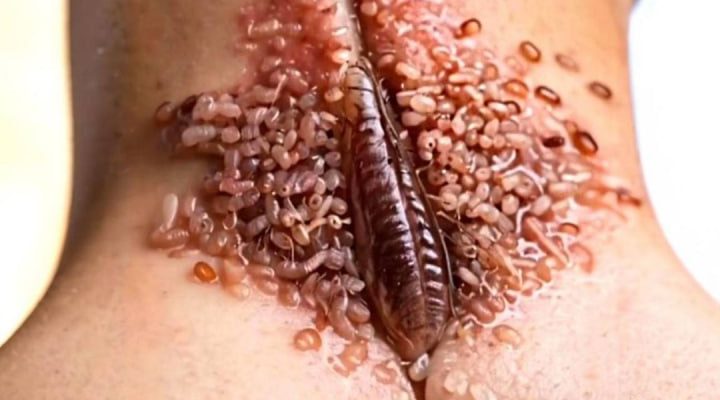In the realm of tropical medicine and neglected diseases, few conditions evoke as much visceral fear as parasitic skin infestations. These diseases, often overlooked in global health conversations, can cause severe physical and psychological trauma—especially when left untreated.
One of the most disturbing examples is cutaneous myiasis, a condition caused by the larvae of certain fly species, such as the Dermatobia hominis (human botfly). These larvae burrow into the skin, feeding on tissue and growing over days or weeks. Victims often report a painful, pulsating sensation beneath the skin, accompanied by swelling, redness, and a visible breathing hole. In advanced cases, secondary infections can develop, leading to fever and systemic illness.
Another notorious culprit is Loa loa, the African eye worm. Transmitted by the bite of the Chrysops fly, this parasite migrates through subcutaneous tissues, sometimes crossing the eye or appearing under the skin in visible, writhing movements. Though rarely fatal, the psychological impact of seeing a live worm move beneath one’s skin is profound.
Fungal infections like chromoblastomycosis and sporotrichosis can also mimic parasitic wounds. These infections often begin as small lesions and evolve into ulcerated, crusted sores that resemble traumatic injuries. In rural communities with limited access to healthcare, such conditions may be mistaken for curses or supernatural afflictions, delaying proper treatment.
The image of a neck wound filled with rice-like granules and a dark embedded object evokes a symbolic representation of these diseases—perhaps exaggerated for artistic or awareness purposes. But the emotional truth it captures is real: the fear of invasion, the loss of bodily autonomy, and the stigma that often follows visible skin disease.
Treatment varies depending on the parasite. Myiasis may require surgical removal of larvae, while Loa loa is treated with antiparasitic drugs like diethylcarbamazine. Fungal infections need long-term antifungal therapy and wound care. Prevention, however, remains the most powerful tool—through insect control, protective clothing, and public education.

